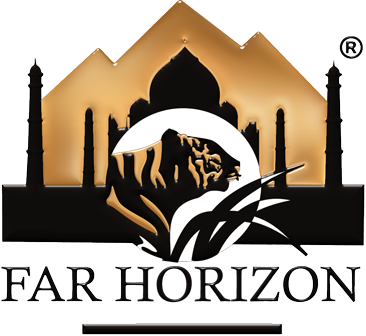Ladakh - Kashmir Traverse Trek
more_vert
-
Duration16 Days
-
Region
-
Category
-
Best Time
- April - September
Introduction
Ladakh, is a stark lunar landscaped land of a high altitude and a cold desert inhabited by Buddhist people following the Lama form of Mahayana Buddhism. Living under the shadows of the surrounding snow covered mountains of both the Himalayan and Karakoram ranges and praying at their monasteries perched on-top of hills trying to reach out to the gods. With prayer wheels in their hands rotating the prayers in the wind “Om Mani Padme Hum” describing the God Buddha as a jewel sitting in a lotus flower.
Following the Indus River drive West towards the Suru River Valley at the quaint town of Kargil and then further, coming to the village of Panniker under the shadows of the towering Mount Nun (7,135 meters) and Mount Kun (7,077 meters). From here the inhabitants follow the religion of Islam and have much affinity to the people of Baltistan located in the Karakorams. The Suru River Valley is a little more green as compared to the stark Indus River Valley of Ladakh.
Commencing trek on stark land scape following Cholang Nala towards Donara where Bobang and Lomvilad gully merge creating a spectacular river basin with green flat lands and snowcapped peaks in the backdrop.
From Donara, traversing the Boktol Glacier and finally walking down along the Boktol River, crossing gurgling mountain streams and over lush green alpine meadows, forests of birch trees,. Eventually cross the GolalGali Pass to come down to Sheeshnag Lake and join the pilgrimage trail of the Holy Amarnath, which is prayed to by Hindus as there is a massive ice Shivling there. The views are dominated by many 5,000 - 6,000 meter, snow covered mountains. Reach Pahalgam from where drive to the historic city of Srinagar where one can stay on-board the ornately carved wooden houseboats on the famous Dal Lake.
Destinations Covered
Delhi
The City of GloryDelhi is said to be one of the oldest existing cities in the world, along with Jerusalem and Varanasi. It is the Capital Territory of India and a modern-day citadel that's dotted with ancient monuments.
History and Culture
Legend estimates it to be over 5,000 years old. Over the millennia, Delhi is said to have been built and destroyed 11 times. The oldest alleged incarnation of the city shows up in the Indian mythological epic Mahabharata as Indraprastha.
Leh Ladakh
A land of scenic beauty and creationsDoksa
A seasonal settlement (typically occupied in the summer) established by herders in the Himalayas
High Shepherd’s Camp
start climbing and ford the stream over the boulders (if water level is high we may have to wade through the water) . After a short walk, you will see the Chalong La spread over an open valley with a few crossing through the icy waters of the streams. Water is not very deep, but it is cold.
Kannital
the high shepherd’s camp we start our uphill walk towards the Boktolpass at 4,980 Meters. The trek to the pass is a mix of easy and hard walk for about 4 hours, on the top of the pass from where there are beautiful views of some 6,000 Meters high unnamed mountain peaks and a huge hanging glacier coming of the Nun massif, which gives a great view. From the top of the pass there is a long descend on the main Boktol glacier for about 4 to 5 hours, till we get to a beautiful camp at Kannital.
Humpet
Humpet is a residence in Ladakh and has an elevation of 3,390 metres.
Rangmarg
Perched cozily upon the slopes of the Pir Panjal range, Tangmarg is a quaint little town that makes for a perfect stopover and one of the best places to visit in Gulmarg. It is situated at a distance of about 13 km from Gulmarg and nearly 39 km from Srinagar. In winters the route from Tangmarg to Gulmarg is a thick blanket of white snow.
Sheshnag
Sheshnag Lake (Urdu pronunciation: [ʃeːʃnaːɡ] ; Kashmiri pronunciation: [ʃiːʃinaːɡ]) is an alpine high altitude oligotrophic lake located in Anantnag district of Kashmir Valley in Jammu and Kashmir, India at an elevation of 3590 meters.
Chandanwari
Chandanwari is famous for being the base, or starting point, to the famous Hindu pilgrimage site, Shri Amarnath Yatra, which starts in June and ends in August. It is situated at an elevation of 2,895 meters, and located about 16 kilometers from Pahalgam. If you are looking for an offbeat tourist place in Jammu and Kashmir where you can relax in the company of nature, then you should visit this place.
Srinagar
Srinagar, is the largest city and the summer capital of the Indian union territory of Jammu and Kashmir. It lies in the Kashmir Valley on the banks of the Jhelum River, a tributary of the Indus, and Dal and Anchar lakes. The city is known for its natural environment, gardens, waterfronts and houseboats.
Detailed Itinerary
- Day 1 Arrive Delhi
- Day 2 Fly Delhi/Leh (3,500 Meters)
- Day 3 Leh
- Day 4 In Leh (Shey, Thiksey And Hemis)
- Day 5 Drive Leh – Kargil (3,000 Meters)
- Day 6 Kargil to Pannikar and start trek to Doksa (3,580 Meters).
- Day 7 Doksa camp to high shepherd’s camp (3,917 Meters)
- Day 8 High shepherd’s camp to Kannital (3,800 Meters)
- Day 9 Kannital to Humpet (3350 Meters)
- Day 10 Rest day at Humpet
- Day 11 Humpet to Rangmarg (3,000 Meters)
- Day 12 Rangmarg to Sheeshnag (3,590 Meters)
- Day 13 Sheeshnag to Chandanwari (2,890 Meters)
- Day 14 In Srinagar (1,585 Meters)
- Day 15 Fly To Delhi
- Day 16 Fly To Onward Destination






